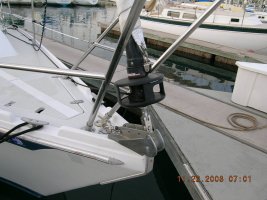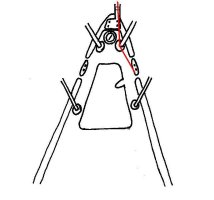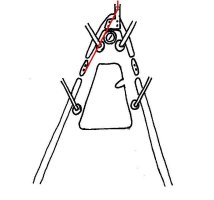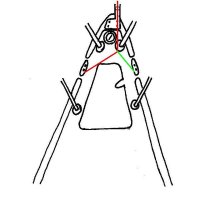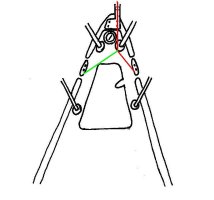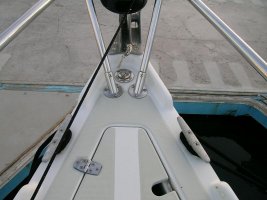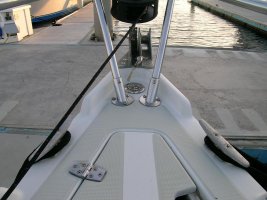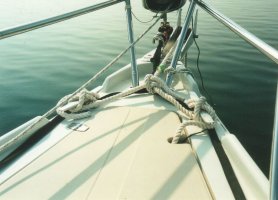mherrcat
Contributing Partner
I am trying to figure out how to secure my anchor rode to the boat when anchoring. I have only been day-sailing but want to start practicing the anchoring procedure.
I have a bow roller, but it is offset to starboard and there is no cleat directly behind it to give a fair lead over the roller. If I go over the roller and attach directly to either cleat on the rail, the rode will ride across the base of the pulpit stanchions. I am afraid of the strain that could put on them.
I thought about trying to rig a line with a snatch block from one of the cleats and lead the rode through that, but there is very little room to get a line with a block in there; the splice in the line ends up right on the cleat making it difficult to tie off.
I have attached a pic of the bow roller and some drawings. In the drawings the red line is the anchor rode and the green line would be the line with the snatch block.
Or should I just forget going over the bow roller and tie the rode off to either of the bow cleats. How would you do this?
I have a bow roller, but it is offset to starboard and there is no cleat directly behind it to give a fair lead over the roller. If I go over the roller and attach directly to either cleat on the rail, the rode will ride across the base of the pulpit stanchions. I am afraid of the strain that could put on them.
I thought about trying to rig a line with a snatch block from one of the cleats and lead the rode through that, but there is very little room to get a line with a block in there; the splice in the line ends up right on the cleat making it difficult to tie off.
I have attached a pic of the bow roller and some drawings. In the drawings the red line is the anchor rode and the green line would be the line with the snatch block.
Or should I just forget going over the bow roller and tie the rode off to either of the bow cleats. How would you do this?
Attachments
Last edited:

